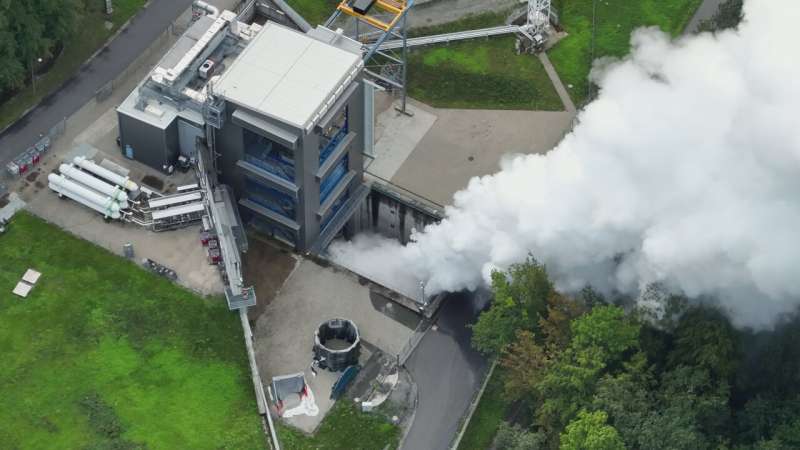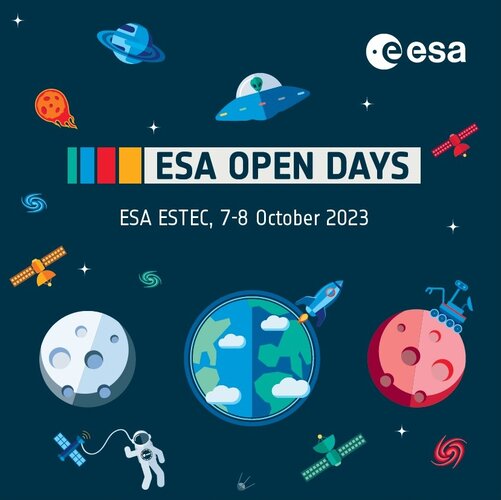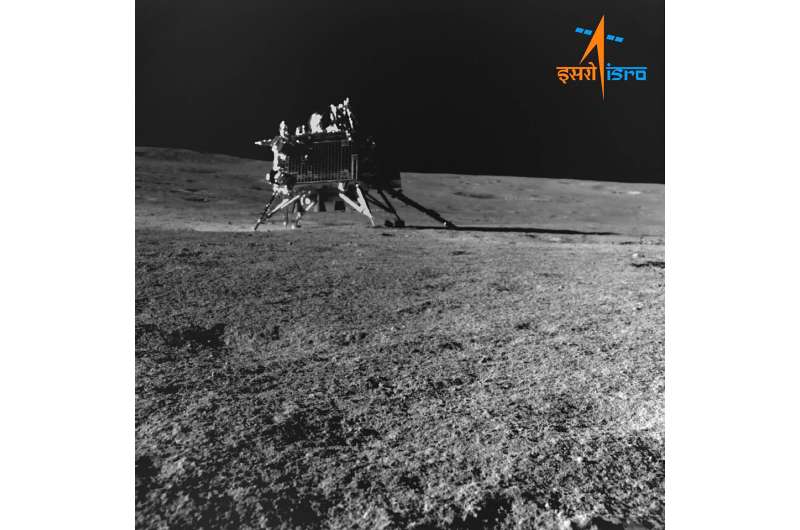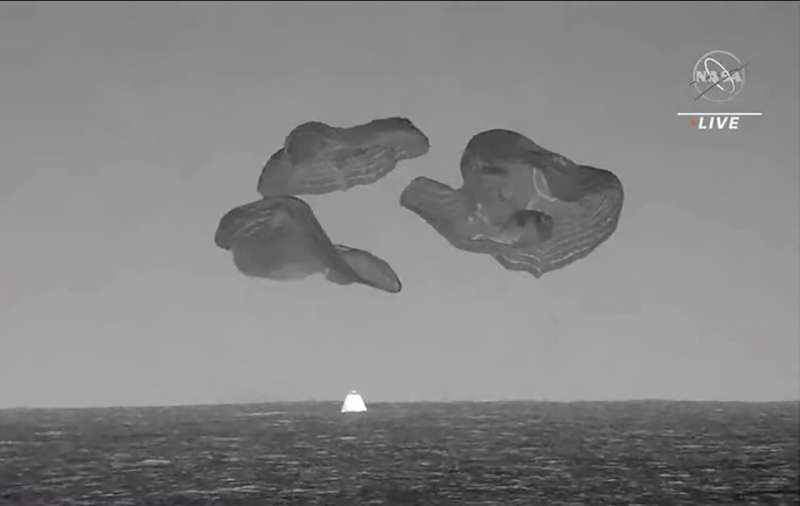
Copernical Team
Trial by fire for the Ariane 6 upper stage

Validation testing continues for ESA's all-new Ariane 6 launch vehicle, with firing of its two upper stage engines to simulate the way they will have to operate together during a flight.
The test of the full upper stage—including the new Vinci engine and a smaller Auxiliary Power Unit (APU)—took place on a purpose-built test bench at German Aerospace Center DLR's engine test center in Lampoldshausen, Germany.
Ariane 6 media briefing – September 2023
 Video:
01:00:57
Video:
01:00:57
Watch the replay of the media briefing and the question-and-answer session outlining the progress achieved and the upcoming steps in the Ariane 6 development test campaign. Updates are given on tests conducted at Europe’s Spaceport in Kourou, French Guiana, and at the German Aerospace Center DLR’s technical centre in Lampoldshausen, Germany.
The briefing was held on 4 September 2023 from ESA’s Headquarters in Paris, France. Participants included:
Josef Aschbacher, Director General, ESA
Martin Sion, CEO, ArianeGroup
Philippe Baptiste, Chairman and CEO, CNES
Stéphane Israël, CEO, Arianespace
Toni Tolker-Nielsen, Director of Space Transportation, ESA
Carine Leveau, Director of Space Transportation, CNES
Stefan Schlechtriem, Director of Lampoldshausen,
ESA Open Day at ESTEC 2023: Registration now open

Take your chance to meet astronauts, view spacecraft and peer behind the scenes of Europe’s space adventure at our ESA Open Day at ESTEC in the Netherlands on Sunday 8 October. Registration is now open.
Next major X-ray mission set to launch

*Update: The new launch date for XRISM is 08:42 JST / 00:42 BST / 01:42 CEST on 7 September 2023*
The X-Ray Imaging and Spectroscopy Mission (XRISM) is ready to launch on 7 September 2023 to observe the most energetic objects and events in the cosmos. In doing so, it will unveil the evolution of the Universe and the structure of spacetime.
XRISM is a collaboration between the Japan Aerospace Exploration Agency (JAXA) and NASA, with significant participation from ESA. The launch will be streamed live in Japanese and English on JAXA’s YouTube channel.
Ariane 6 joint update report, 4 September 2023

The Ariane 6 Launcher Task Force consists of top management at ESA, the overall Ariane 6 procuring entity and launch system architect, launch base prime contractor and French space agency CNES, launcher system prime contractor ArianeGroup and launch service provider Arianespace. This group reports regularly on progress being made towards inaugural flight of the new Ariane 6 launcher.
The next update is expected in October.
Firefly and Millennium stand ready for Responsive mission for Space Force
 Firefly Aerospace, Inc., an end-to-end space transportation company, and Millennium Space Systems, a Boeing Company (NYSE: BA) small satellite constellation prime, have entered the hot standby phase for VICTUS NOX, a Tactically Responsive Space mission led by Space Systems Command's (SSC) Space Safari Program Office. The team stands ready for the 24-hour callup and orbit requirements to complete
Firefly Aerospace, Inc., an end-to-end space transportation company, and Millennium Space Systems, a Boeing Company (NYSE: BA) small satellite constellation prime, have entered the hot standby phase for VICTUS NOX, a Tactically Responsive Space mission led by Space Systems Command's (SSC) Space Safari Program Office. The team stands ready for the 24-hour callup and orbit requirements to complete Lockheed Martin's Transport Layer satellites launch as part SDA's Tranche 0
 Ten Lockheed Martin-built (NYSE: LMT) satellites have been deployed into low-Earth orbit (LEO) in support of the Space Development Agency's (SDA) Tranche 0 Transport Layer (T0TL) mission. SDA's T0TL is a proliferated LEO constellation that will demonstrate low-latency communication and provide a resilient network of integrated capabilities.
The small satellites launched aboard a SpaceX Fal
Ten Lockheed Martin-built (NYSE: LMT) satellites have been deployed into low-Earth orbit (LEO) in support of the Space Development Agency's (SDA) Tranche 0 Transport Layer (T0TL) mission. SDA's T0TL is a proliferated LEO constellation that will demonstrate low-latency communication and provide a resilient network of integrated capabilities.
The small satellites launched aboard a SpaceX Fal SpaceX sends 22 new Starlink satellites into orbit in 60th launch of 2023
 Twenty-two new Starlink Internet satellites started orbiting the Earth after a successful launch by SpaceX late Thursday night from Cape Canaveral Space Force Station.
The satellites, part of the constellation being created by SpaceX to provide Internet access even in the most remote locations on the globe, were taken into space by the workhorse Falcon 9 rocket at 10:21 p.m. EDT.
In
Twenty-two new Starlink Internet satellites started orbiting the Earth after a successful launch by SpaceX late Thursday night from Cape Canaveral Space Force Station.
The satellites, part of the constellation being created by SpaceX to provide Internet access even in the most remote locations on the globe, were taken into space by the workhorse Falcon 9 rocket at 10:21 p.m. EDT.
In India's moon rover completes its walk. Scientists analyzing data looking for signs of frozen water

Four astronauts return to Earth in SpaceX capsule to wrap up six-month station mission

